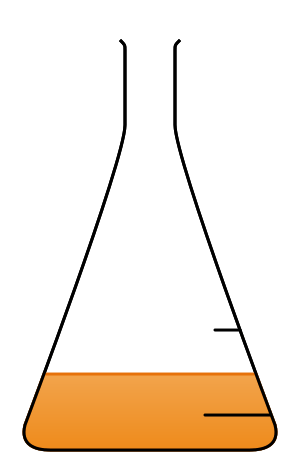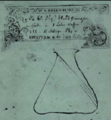Erlenmeyer flask facts for kids
An Erlenmeyer flask is a special type of flask used in science labs. It's also called a conical flask because its bottom part looks like a cone. It has a short, narrow neck at the top.
Scientists use Erlenmeyer flasks as containers for different chemical substances. They are also great for heating or boiling liquids. Because of their narrow neck, liquids don't spill out easily, which makes them safer to use. These flasks are also important tools in a process called titration, where scientists carefully measure how much of one liquid is needed to react with another.
Contents
Who Invented the Erlenmeyer Flask?
The Erlenmeyer flask was first created in 1861 by a German chemist named Richard Erlenmeyer. He designed it to be practical and useful for many different tasks in the lab.
Why is its Shape Important?
The unique shape of the Erlenmeyer flask makes it very helpful for scientists.
- The wide, flat bottom allows it to sit steadily on a lab bench or a hot plate.
- The sloped sides and narrow neck help prevent liquids from splashing out when you swirl the flask. This is especially useful when mixing chemicals.
- The narrow opening also helps to slow down the evaporation of liquids, meaning they don't disappear into the air too quickly. It also makes it easy to cover the flask with a stopper or a piece of foil.
How are Erlenmeyer Flasks Used?
Erlenmeyer flasks are used for many different things in science labs, including:
- Mixing and Storing Liquids: They are perfect for holding and mixing solutions. You can swirl the flask without worrying about spills.
- Heating and Boiling: Their glass material can handle heat, so they are often used to warm up or boil liquids over a Bunsen burner or on a hot plate.
- Titration: This is a precise experiment where a liquid is slowly added from a burette into the flask to react with another substance. The flask's shape helps keep the reaction contained and visible.
- Growing Microbes: In biology labs, Erlenmeyer flasks are sometimes used to grow tiny living things like bacteria or algae in a liquid food source.
Images for kids
See also
 In Spanish: Matraz de Erlenmeyer para niños
In Spanish: Matraz de Erlenmeyer para niños







